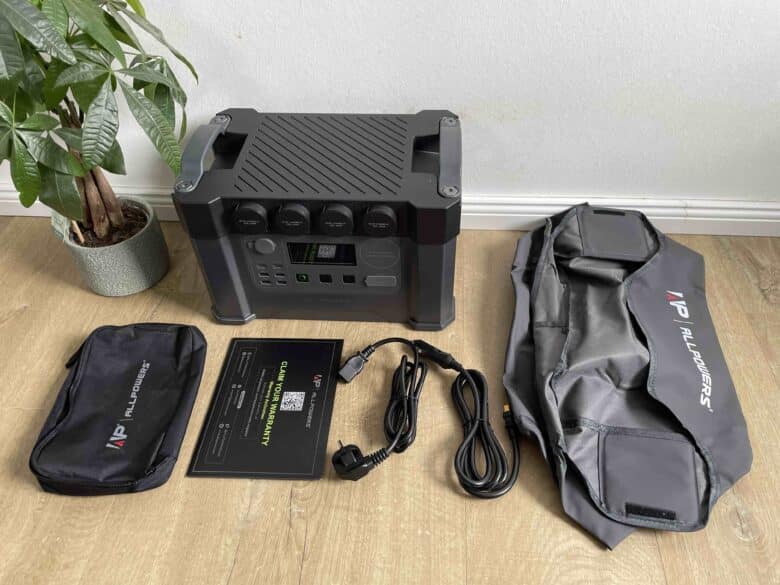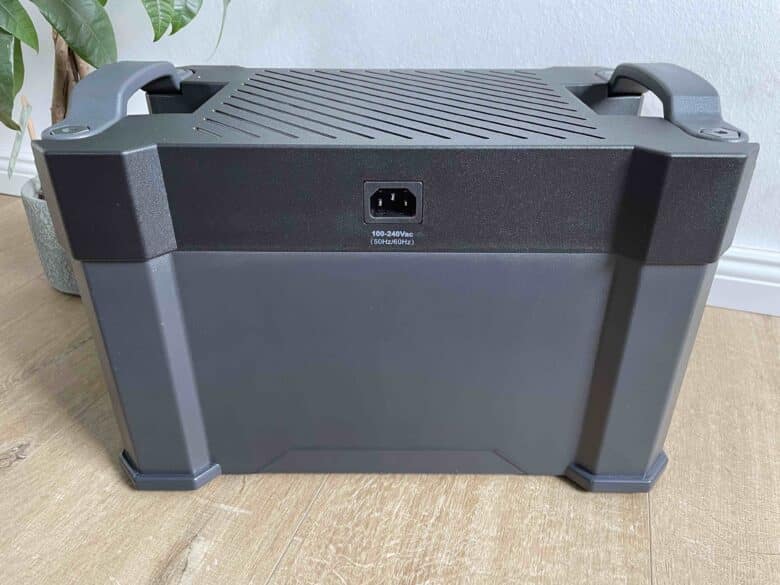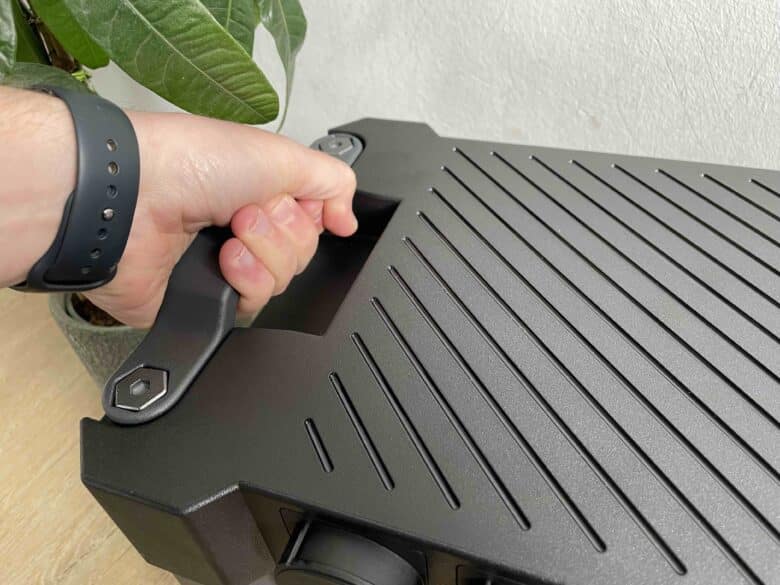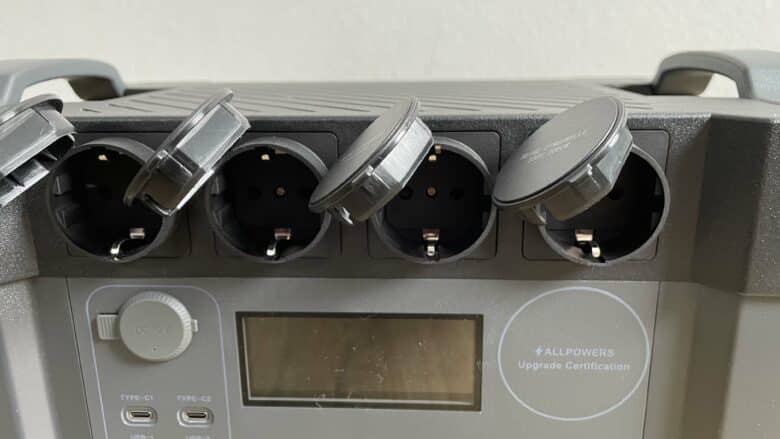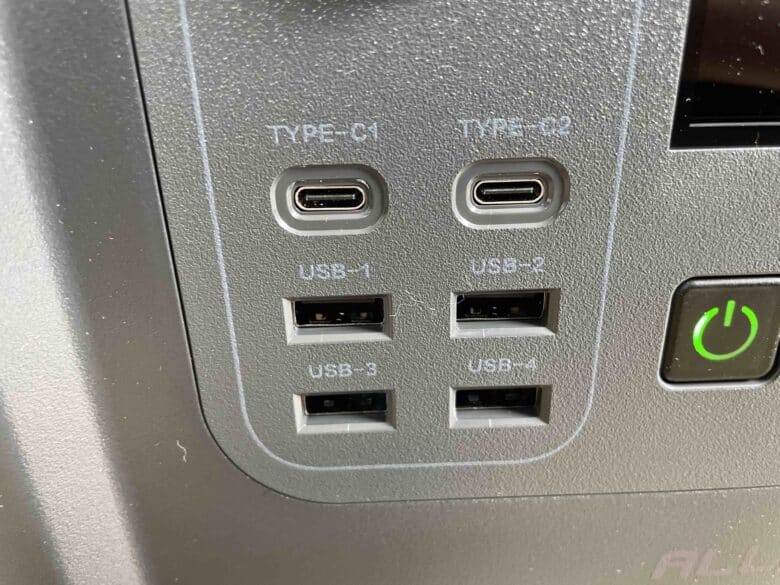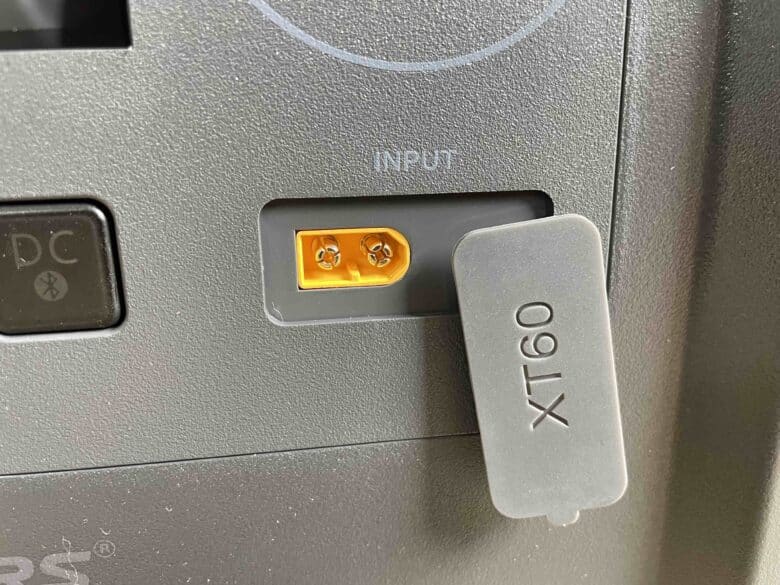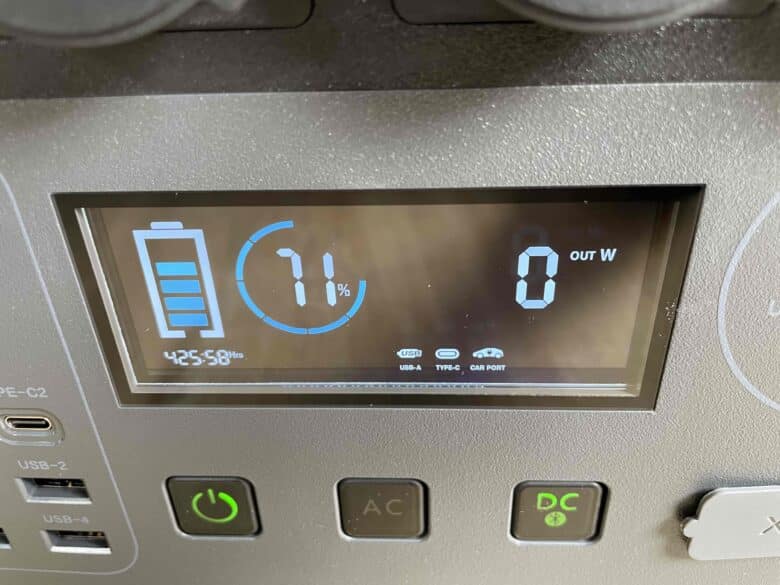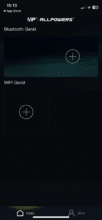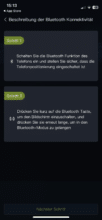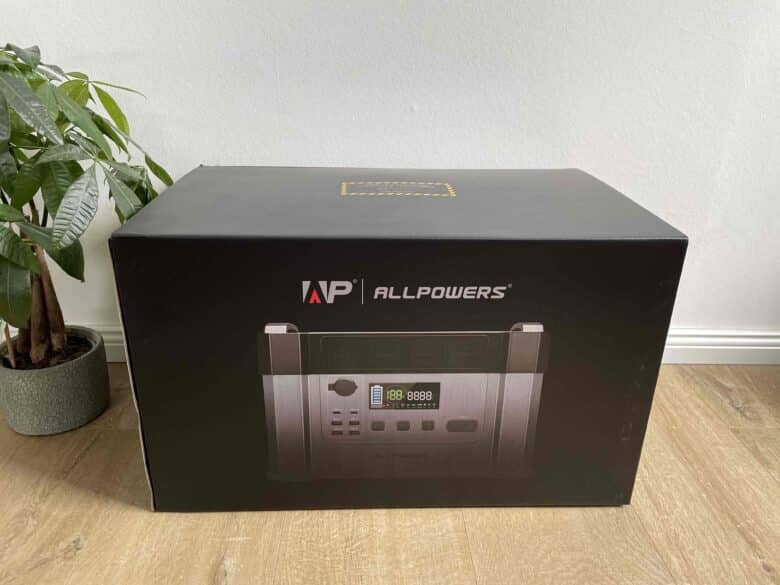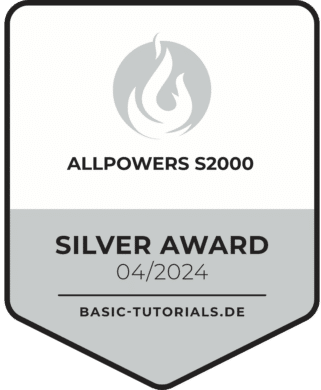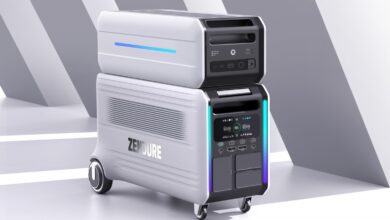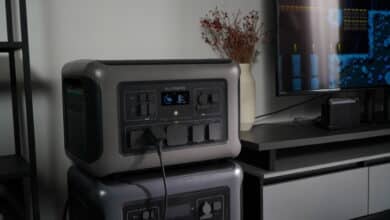
In our series of tests on power stations, Allpowers has so far scored particularly well in one discipline – the price-performance ratio. With the Allpowers S2000, today we want to take a closer look at another mobile energy storage unit from the manufacturer. Its technical data already raises high hopes for another surprise. In addition to a capacity of 1,500Wh, this power station also aims to score points with a constant output power of 2,000W and a good variety of connections. Will the plan work? Find out in the Allpowers S2000 test.
Technical data
| Battery | Nickel-cobalt-manganese battery with 1,500 Wh capacity |
| Power output | – 2,000 watts constant output power – 4,000 watts temporary peak power |
| Charging power | – AC solar with 900 watts (1.6 h for full charge) – AC with 400 watts – Solar with 500 watts – Car with 140 watts |
| Outputs | 4x 230V AC, 2x USB-C (100 W), 4x USB-A (QuickCharge), 1x cigarette lighter |
| Price | € 1,199.99 * |
Allpowers S2000 test: Scope of delivery
Of course, the S2000 is not really handy. But in view of the high battery capacity, I didn’t expect it to be. This becomes clear from the rather large packaging. It not only contains the power station itself. There are also suitable cables such as a mains cable, car cable and an adapter (XT60 to MC4).
Allpowers therefore supplies all the cables you need for charging via AC, car or solar panel. The matching bag supplied is also practical. You can conveniently store the mobile energy storage unit and accessories in it. The whole thing is rounded off with a quick-start guide.
Allpowers S2000 test: design and workmanship
The Allpowers S2000 is instantly recognizable as a power station. The manufacturer is not experimenting here and has opted for a classic design. At 375 x 245 x 250 mm, it is anything but handy. Nevertheless, with a weight of 14.5 kg, it can be carried over short distances. This is where the two carrying handles on the top come in handy.
A color combination of light and dark grey is also typical for the power station sector. However, the surface of the Allpowers S2000 looks a little vulnerable. Models from well-known manufacturers such as Bluetti or Ecoflow, which use a similar color scheme, are much less susceptible to fingerprints. If this bothers you, you will have to look in a different price category.
Personally, the whole thing didn’t bother me at all. That’s because the Allpowers S2000 exudes a certain outdoor charm. I’m not bothered by stains on the Powerstation. The design of the Powerstation is quite simple. Almost all inputs and outputs as well as the display are located on the front. Only the connection for charging via AC is located at the back.
Rubber caps provide protection against dirt and moisture. However, these are only located on the AC sockets and the vehicle connection. All in all, there is nothing to complain about in terms of build quality. The only thing that caught my eye, or rather my nose, was the somewhat chemical smell when unpacking. However, this disappeared after two to three days.
Allpowers S2000 test: Outputs
Next, let’s take a look at the power station’s connections. The Allpowers S2000 also knows how to please here. You will find 4x 230V Schuko sockets on the front, which can provide a constant output of 2,000W. A temporary peak power of 4,000W is even possible. There are also 2x USB-C with 100W each and 4x USB-A with QuickCharge.
Last but not least, there is 1x cigarette lighter. This variety should be enough for most people. However, one feature that is commonplace in the R-series is unfortunately missing here. For example, the Allpowers R1500(test) and R600(test) offer Qi charging surfaces on the top.
I personally find this extremely practical if you already have several devices connected to the energy storage unit. After all, too many cables can lead to cable clutter. Wireless charging provides a little disentanglement here. However, you have to bear in mind that the R series is also Allpower’s flagship product.
Allpowers S2000 test: Inputs
Of course, there are also inputs for charging the power station. With the XT60 port on the front, you can charge the Allpowers S2000 using a solar panel. There is also a car connection for charging by car. However, the fastest way is via the AC connection. This is located on the back of the power station. To be honest, I find the positioning a little hard to get used to.
After all, most manufacturers position it on the side to ensure better accessibility when the Powerstation is positioned with its back to the wall. For Allpowers, however, there will have been no alternative. After all, the manufacturer installs the power supply unit directly in the S2000 itself. This ensures that the IEC plug is wonderfully compact. I’m happy to accept the connection at the rear.
Allpowers S2000 test: Display with good visibility
The display is located centrally on the front. Here you can read the most important parameters for the energy storage system. This not only includes the current battery charge level. The outgoing and incoming power are also displayed.
The calculation of the remaining runtime is particularly interesting. In the test, the display scored with excellent visibility. I had no problems reading it even in bright sunshine.
Allpowers S2000 test: uncomplicated operation
There are buttons right next to the display that you can use to activate or deactivate the power station’s connections. This ensures that you don’t have to worry about unintentionally wasting power. The DC button has a dual function. It can also be used to activate Bluetooth.
This allows you to establish a connection to the Allpowers app. However, the app is not absolutely necessary to use the Powerstation. But it definitely provides an increase in user convenience. After all, the smartphone application enables remote control and management of the S2000.
In the Allpowers app, you can not only read exactly the data that you receive via the display. The inputs and outputs can also be switched on and off here. However, you must not be too far away from the power station. After all, a Bluetooth connection between the smartphone and mobile energy storage device is essential for use.
Allpowers S2000 test: No LiFePo4 battery cells
Despite its rather large battery capacity of 1,500 mAh, the Allpowers S2000 is surprisingly light. This is due to the choice of battery cells. Nickel-cobalt-manganese cells (NCM) are used here. Although this enables very compact and, above all, lightweight battery storage, the battery technology also has decisive disadvantages compared to modern LiFePO4 cells. In terms of durability and safety in particular, the newer batteries clearly have the edge.
With NCM cells, you have to reckon with a higher risk of fire development or even explosions. Furthermore, only 1,000 charging cycles should be possible until the maximum battery capacity has dropped to 80%. Powerstations with LiFePO4 cells usually offer 3,500 charging cycles and therefore last more than three times as long. This puts the S2000 at a clear disadvantage compared to other power stations and is no longer really state of the art.
Allpowers S2000 test: Strong performance
The choice of outdated battery technology is not much noticeable when it comes to power consumption. Here the Powerstation delivers an outstanding performance. I connected a wide variety of devices in the test. From my iPhone to my MacBook and an angle grinder with an output of 2,200W, the S2000 always delivered a great performance and never failed at any point.
I was particularly pleasantly surprised with the angle grinder. After all, the 2,200W exceeds the specified maximum constant power. However, this may also be due to the soft start that it offers. You also get an uninterruptible power supply (UPS) here. This also worked excellently in the test.
With a UPS, the power station acts as a kind of emergency power generator. In the event of a power failure, the energy storage unit takes over for the conventional power supply. I connected the S2000 between the PC and the socket as a test and then removed the fuse. My PC continued to run smoothly. The reason for this is that the Powerstation needs just 30ms to step in as a power supplier.
Allpowers S2000 test: battery charging at a snail’s pace
Sooner or later, however, even the rather large battery of an Allpowers S2000 will run out. The charging speed is disappointing. According to the manufacturer, there are a total of five different ways to charge the battery. The “fastest” way is via solar panels. Allpowers provided us with one-fit 600 watts of power for the test. Solar panels can provide up to 500W input power.
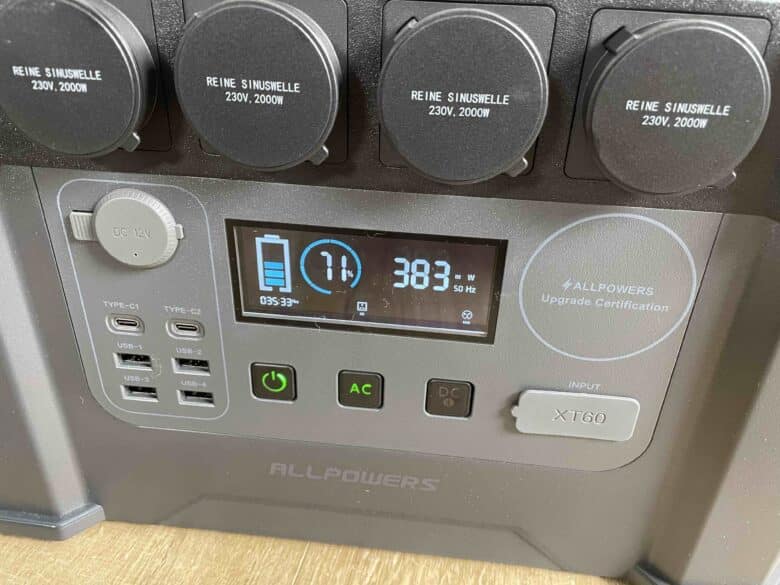
It then takes a total of three hours to fully charge the power station. In the test, I was able to get just under 350 watts out of the panel. However, it was only spring sunshine. Full sunshine in summer should provide significantly more power. It takes longer when using a household socket. A maximum of 400W is possible here, which means you have to allow a total of four hours for a complete charge.
The longest charging time is via the car. A maximum of 140W is possible here, which is why you have to reckon with a charging time of at least 12 hours. If you want to shorten the charging time, you can also combine charging. For example, you can charge simultaneously via the AC input and solar input. Then, according to Adam Riese, a maximum of 900W is possible, which leads to a charging time of a much more pleasant 1:40h.
Save now on the Allpowers S2000!
With our code BS10 you can save even more on the Allpowers S2000. Simply enter it when ordering the Allpowers S2000 or the 600 watt solar panel and benefit from a 10 percent discount!
Conclusion
The Allpowers S2000 has both bright and dark sides. Let’s start with the positives. You get a very well-made and robust piece of technology with a cool, angular outdoor design. The Powerstation also comes with an impressive 1,500 Wh battery capacity. Nevertheless, it weighs less than 15 kg. Thanks to the two carrying handles, it can be easily carried from A to B.
In addition, there is a constant output power of 2,000W, a peak power of 4,000W, UPS and an extensive range of connections, which should be able to accommodate any of your devices. But there are also negative points. The most significant, in my opinion, is the battery technology, which is simply no longer up to date. Other power stations with comparable data and LiFePO4 batteries offer three times the service life.
I would also have liked more charging power. You have to be patient until the battery is full. On the other hand, if you want to charge it faster, you need good weather to be able to charge it with solar energy and AC. If you don’t mind the downsides, you get a really powerful power station with plenty of stamina at a really fair price.
Allpowers S2000
Design and workmanship
Hardware
Usability
Output power
Input power
Value for money
89/100
The Allpowers S2000 scored highly in the test with great performance and a terrific price. Unfortunately, the Powerstation relies on an outdated battery that charges at a snail's pace.
